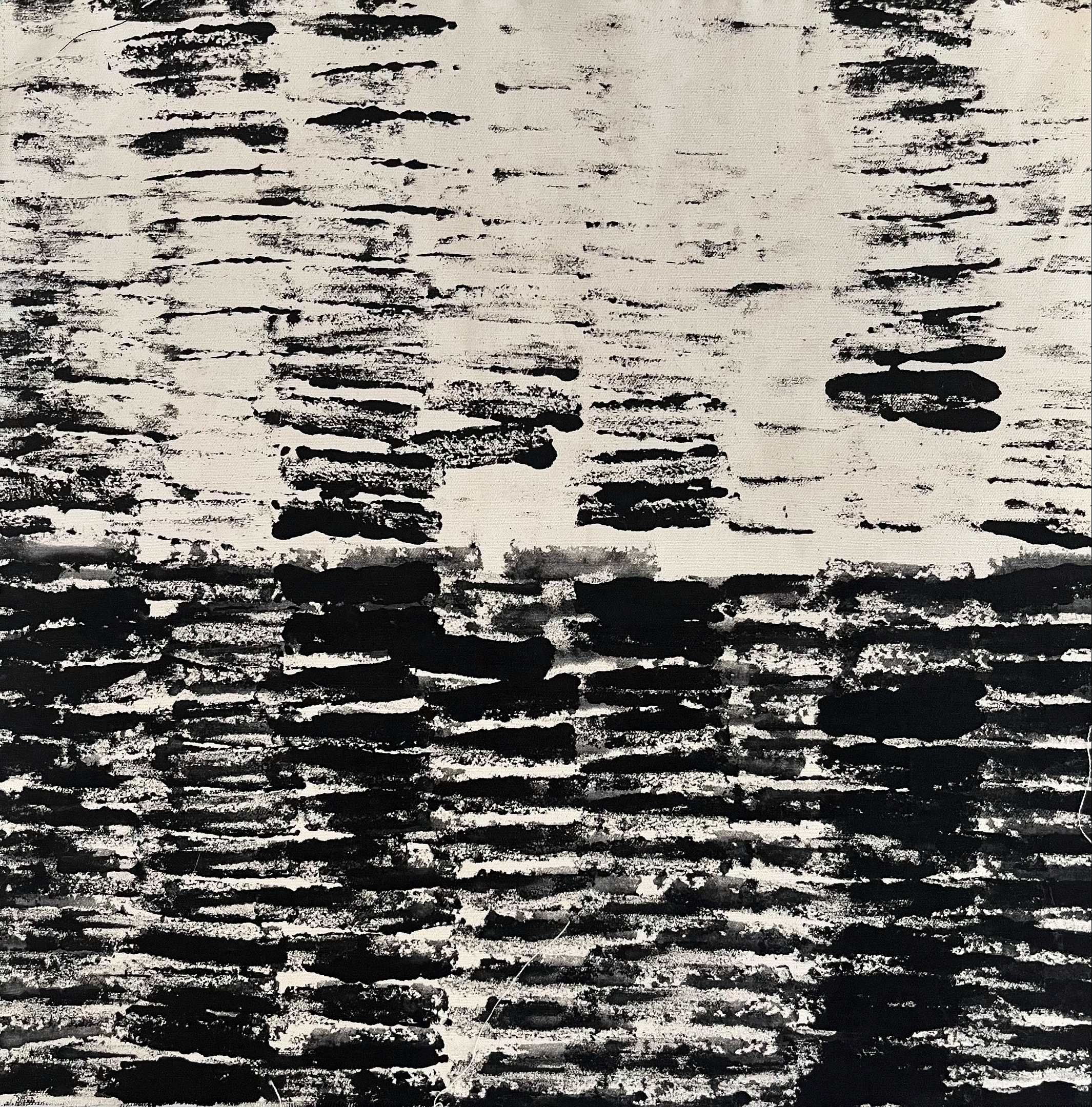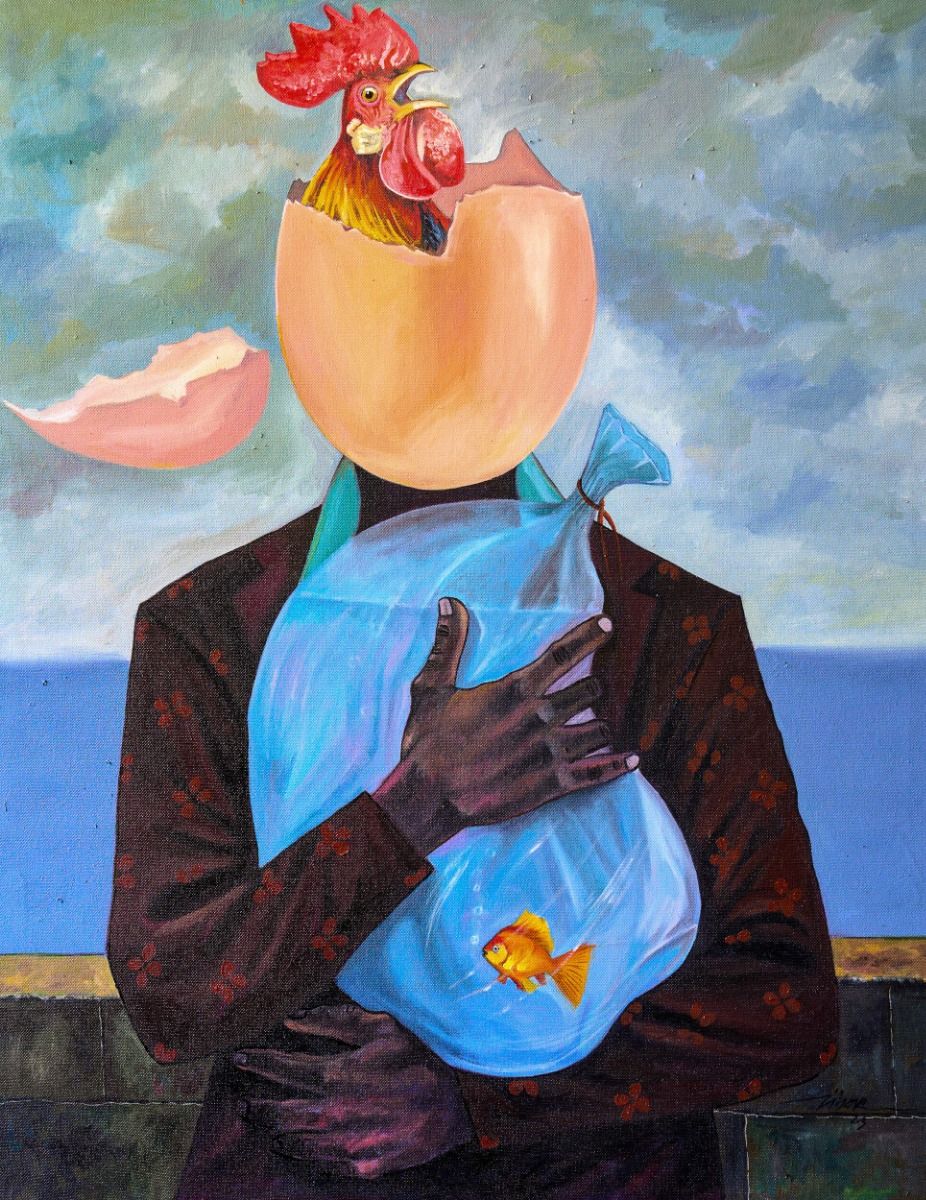Between the Painting and I
By Denzo Nyathi
 Kirsten Sims, Read My Mind, 2024, R90,000.00 ex. VAT, CONTACT TO BUY
Kirsten Sims, Read My Mind, 2024, R90,000.00 ex. VAT, CONTACT TO BUY
---------------
Brushstroke by brushstroke, through generations of reiterations and movements, ‘the painting’ has become so ubiquitous as to almost become a synonym for ‘art’ by and large. No short of thanks to the canon, most of the masterpieces of yester-art that readily come to mind are oil paintings by the likes of Van Gogh and Da Vinci. Being cautious to not equate traditional Western art practices with art itself, it’s a worthwhile reminder to consider how even tens of thousands of years ago, paintings were being painted on the rocky walls of caves in ancient societies of the Global South.
In some way, the presence of a painting on every wall — from the pristine white finish of a gallery to the prehistoric archive of a cave — can be somewhat overwhelming. How has the language of paint transcended race, time, geography and cultural context?
In that same breath, there is something beautifully profound about painting. Indeed, how has the language of paint transcended race, time, geography and cultural context, if not proof of it as one of those universal languages that enwraps the human experience, like dance, mathematics, and laughter amongst loved ones.
I recently had the pleasure of attending Penny Siopis’ live painting demonstration, as a part of The Centre for the Less Good Idea’s Showing the Making series. With a large-scale blank canvas, ink, a bucket of water and an abundance of cold glue, the master painter took the audience through her complex thought processes around creating. Albeit impossible to condense and do justice to the thought process of an artist who has been working on her craft for 40+ years, there was one take away which has beautifully haunted me. “[One] of these fundamental questions in any image making is when we decide what is the figure and what is the ground, and why in fact do we think the figure is more important?” She mused, beginning to share aloud her thoughts on relationality and materiality. “There’s no such thing as a background. Everything is there. Figure, ground, figure, ground, figure, ground.”
 Penny Siopis at The Centre for The Less Good Idea
Penny Siopis at The Centre for The Less Good Idea
In these early stages of delivering one of her iconic abstract paintings, she was unearthing truths about painting by pointing to the nature of painting itself. In highlighting the (mostly) two-dimensional plane upon which the work lives, Siopis speaks to an interesting way in which images spatially relate to one another in the painting itself. They are not bound to the same laws of three-dimensional living that their captive human viewers audiences are. Forms are intrinsically bound to one another, in spite of divisive lines and colours that might optically demarcate them. Their plane is different; it is a plane where depth is illuded into being, and not born into.
Herein lies (an element of) the allure of painting. In a painter’s sacred rituals of transfiguration, they become a bridge between our world and its laws, and the world of a painting. In the case of figurative paintings, we recognise the work as a representation of a person, or a thing, and not that person or thing itself. The representation does not — cannot — bear the same gravitas and weight of that which it represents. Yet, in its immortalisation, it holds a different relationship to time, that asks us to think and feel differently. Perhaps the painting is not the “real” thing, but it immortalises a very real moment in time, in which the painter and their subject extensively engaged. The finest of paintings are able to in some way communicate the tensions between the perceiver (painter) and the perceived (subject). On the same evening of the live painting demonstration, Siopis spoke more about returning to paintings days later, changing their orientation, and re-negotiating with the then-dried works as to what more might be needed. This recalls that visceral, deep feeling in the gut, as one looks down some great opening of the earth, and can almost feel it looking back up at you. In the case of some of the finest abstract paintings, the works are a call-to-search to not just their painters, but their audiences to come. It is often a search that requires a head tilt, a step back, a step forward and a polite ask to the person beside you: “what do you think it means?”
 Chuma Adam, Untitled III, 2024, R8,000.00 ex. VAT, CONTACT TO BUY
Chuma Adam, Untitled III, 2024, R8,000.00 ex. VAT, CONTACT TO BUY
Layer after layer of paint application (sometimes to the point of edging figuration into abstraction) dry to solidify a tension that cannot be undone. Indeed, a tension that has never been undone. These renderings of process, figures and emotions have pulled at the heart strings of global audiences for millenia. And in encountering just the right painting, one can understand why. Although a universal language, when one comes across the right painting, it raises so many personal questions of relationality. How is it that this painter has managed to invoke these feelings within me, with so minimal a brushstroke and colour palette? How is it that the painter has captured an experience of mine that once felt like mine alone, and so strikingly? By that same virtue, how is it that the painting has connected me to a collective memory?
These questions come back to the marvels of painting, as it transcends our traditional understandings of relationality. In the distance between the painting and I, I simultaneously stand in the place of a million viewers before me, while having an intimate history of my own with the painting that looks back at me. The silent prowess of the painting, in its ability to look back at us and challenge us, obscures the relationship between perceiver and the perceived. No fore, no ground. Just limitless possibility for connection.

Moses Zibor, Broken egg, rooster and golden fish, 2022, Price on request, ENQUIRE
Further Reading In Articles
African Artist Directory















